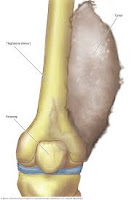Stomach cancer is usually classified by where it originates from within the stomach. Every different place where they can develop is a different tissue altogether, which is usually how they classify the cancer.
 |
| http://cancers-list.blogspot.com/ |
Stomach cancers are most commonly found in the stomach's lining. These types account for more than 80% of all stomach cancer cases. The other percentage are the more uncommon cases that are usually cancer of the lymphatic system(lymphomas)or cancers of the tissues that connect other tissues(sarcomas).
Surrounding your body with natural whole, raw foods and nutrients has worked wonders on all types of cancer. Creating a defense system in the body that is near supernatural.
Curing Food 1) Cinnamon
Any food that is high in antioxidants people concerned with cancer prevention should be all over. A single tablespoon of cinnamon has more antioxidants than 8 ounces of broccoli. It also tastes good in your oatmeal. Use it everywhere you can.
Curing Food 2) Ginger
Ginger like many other cancer fighters has a great amount of antioxidants present in it naturally. It also has loads of iron in it. This, for many vegans and vegetarians, is used to supplement a regular iron intake seeing as they are pursuing a lifestyle avoiding meat.
Curing Food 3) Hot Peppers
Hot Peppers are always a tasty addition to eating, when asking how to cure stomach cancer. These spicy foods possess a very rarely seen compound that can stop cancer cells in their tracks. When made into salsa along with tomatoes can be a deadly cancer fighting food, as well as the most healthy and beneficial condiment on the planet.
Curing Food 4) Garlic
Garlic aside from making things taste great(and giving your breath that "Bruce Lee" kicking effect), this food fights cancer in many ways. First by supporting the immune system
with a natural compound known as dialyl sultide, Then by having the ability to block cancer causing carcinogens that can attach themselves to your cells.
Curing Food 5) Carrots
Not just for Bugs Bunny, carrots have lots of beta carotene which works to reduce a wide range of cancers. This includes throat, stomach, intestinal, bladder, and breast cancers.
It shouldn't take lots of pain or poison to cure stomach cancer. All you really need is a sound and juicy anti-cancer diet. Bringing together all the right foods to combat cancer can make your fight one you can win.
Stomach Cancer, Stomach Cancer, Stomach Cancer, Stomach Cancer, Stomach Cancer, Stomach Cancer, Stomach Cancer, Stomach Cancer, Stomach Cancer, Stomach Cancer, Stomach Cancer, Stomach Cancer, Stomach Cancer, Stomach Cancer, Stomach Cancer, Stomach Cancer, Stomach Cancer, Stomach Cancer, Stomach Cancer, Stomach Cancer, Stomach Cancer, Stomach Cancer, Stomach Cancer, Stomach Cancer, Stomach Cancer, Stomach Cancer, Stomach Cancer, Stomach Cancer, Stomach Cancer, Stomach Cancer, Stomach Cancer, Stomach Cancer, Stomach Cancer, Stomach Cancer, Stomach Cancer, Stomach Cancer, Stomach Cancer, Stomach Cancer, Stomach Cancer, Stomach Cancer, Stomach Cancer, Stomach Cancer, Stomach Cancer, Stomach Cancer, Stomach Cancer, Stomach Cancer, Stomach Cancer, Stomach Cancer, Stomach Cancer, Stomach Cancer, Stomach Cancer, Stomach Cancer, Stomach Cancer, Stomach Cancer, Stomach Cancer, Stomach Cancer, Stomach Cancer, Stomach Cancer, Stomach Cancer, Stomach Cancer, Stomach Cancer, Stomach Cancer, Stomach Cancer, Stomach Cancer, Stomach Cancer, Stomach Cancer, Stomach Cancer, Stomach Cancer, Stomach Cancer, Stomach Cancer, Stomach Cancer, Stomach Cancer, Stomach Cancer, Stomach Cancer, Stomach Cancer, Stomach Cancer, Stomach Cancer, Stomach Cancer, Stomach Cancer, Stomach Cancer, Stomach Cancer, Stomach Cancer, Stomach Cancer, Stomach Cancer, Stomach Cancer, Stomach Cancer, Stomach Cancer, Stomach Cancer, Stomach Cancer, Stomach Cancer, Stomach Cancer, Stomach Cancer, Stomach Cancer, Stomach Cancer, Stomach Cancer, Stomach Cancer, Stomach Cancer, Stomach Cancer, Stomach Cancer, Stomach Cancer, Stomach Cancer, Stomach Cancer, Stomach Cancer, Stomach Cancer, Stomach Cancer, Stomach Cancer, Stomach Cancer, Stomach Cancer, Stomach Cancer, Stomach Cancer, Stomach Cancer, Stomach Cancer, Stomach Cancer, Stomach Cancer, Stomach Cancer, Stomach Cancer, Stomach Cancer, Stomach Cancer, Stomach Cancer, Stomach Cancer, Stomach Cancer, Stomach Cancer, Stomach Cancer, Stomach Cancer, Stomach Cancer, Stomach Cancer, Stomach Cancer, Stomach Cancer, Stomach Cancer, Stomach Cancer, Stomach Cancer, Stomach Cancer, Stomach Cancer, Stomach Cancer, Stomach Cancer, Stomach Cancer, Stomach Cancer, Stomach Cancer, Stomach Cancer, Stomach Cancer, Stomach Cancer, Stomach Cancer, Stomach Cancer,











